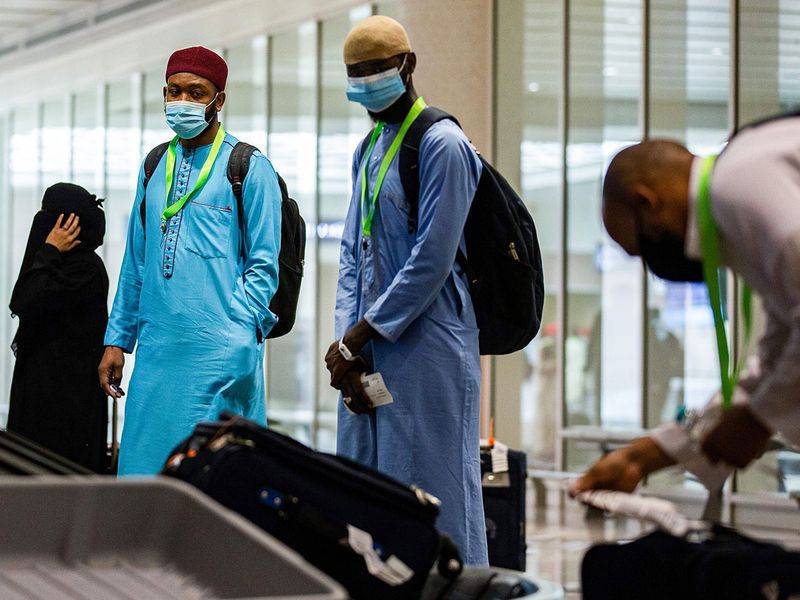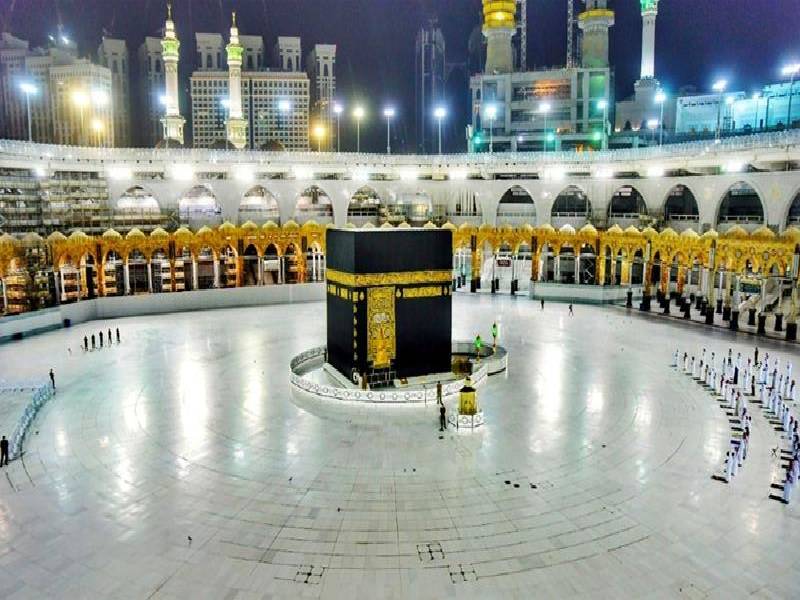Haj 2020: Handful of pilgrims this year
By J.S. Ifthekhar
Hyderabad, July 28:
'And pilgrimage to the House (Ka'bah) is a duty unto Allah for mankind,
for him who can find a way thither.' (Quran: 3- 97)
As with other things, the ongoing corona virus pandemic has cast its shadow on the Haj 2020 as well. The annual pilgrimage which is commencing from Wednesday (July 29) will be a dramatically scaled down affair this time. Just a handful of pilgrims - 1000 from 160 countries - have been selected to perform Haj this year. Of this 70 percent pilgrims are expats living in the kingdom. This has obviously put paid to the hopes of lakhs of Muslims who are eagerly looking forward to undertake the journey of a lifetime. Last year about 2.5 million worshippers from all over the world took part in the pilgrimage.
About 2 lakh Indians travel to Saudi Arabia every year for Haj through the Haj Committee of India and private tour operators. And it is no different this year. Even as speculation was rife about the likely cancellation of Haj amidst mounting corona fears, the Minority Affairs Ministry was hopeful that at least some Indians will get an opportunity to take part in the pilgrimage and was making arrangements accordingly. However, Saudi Minister for Haj and Umrah, Mohammad Saleh bin Taher, ended months of uncertainty when he conveyed his country's decision to bar international pilgrims this year. The Haj Committee of India, of course, will be returning the applicants money in full and the process is already on. But it will take long time for the Haj hopefuls to overcome the shock. For most of the Indian pilgrims Haj is once in a lifetime experience and many save money for it over several years. Having been selected in the qura (draw of lots) and yet not been able to realise their cherished dream is a big letdown.
Haj, the fifth pillar of Islam, is an intense act of love and devotion. And this consecrated journey is always fraught with trials and tribulations even in this age. The outbreak of infectious diseases via the respiratory route is common during Haj season. Over the years incidents such as cholera epidemic, eruption of fire in the crowded tent city of Mina or stampede during stoning of the devil ritual have marred the pilgrimage. More recently - September 2013 - the Middle East Respiratory Syndrome (MERS) led to restriction of elderly and chronically ill Muslims from performing Haj. However, Covid-19 is the most serious of challenges yet to hit the pilgrimage.

Though there is huge disappointment and yet the Saudi government's decision to limit the number of Haj pilgrims has found the approval of many Arab countries and Muslim organisations. Even the WHO Director-General Dr. Tedros Adhanum, welcomed the Saudi's resolve to put the public health at the forefront. Haj pilgrimage is the world’s largest mass gatherings where people mingle and worship shoulder to shoulder for days together. Over the years the Saudi authorities have mastered the art of crowed management during Haj. But still the risk of infection looms large given the sheer number of pilgrims engaged in performance of rituals at the same time and place. And the threat gets multiplied several times in the present situation which calls for social distancing. It is first time in living memory that the Haj assemblage has been curtailed so drastically. Obviously lot of careful risk assessment and a thorough analysis of the various scenarios has weighed with the Saudi authorities before taking the hard decision.
Haj and Umrah, the lesser pilgrimage which is performed throughout the year, are the backbone of the Saudi economy. After oil and gas, they are the key revenue earner for the kingdom. Together they contribute an estimated $12 billion per year to the Saudi's GDP. And this works out to about 20 percent of the kingdom's non-oil GDP and 7 percent of total GDP. Interestingly, the Crown Prince, Mohammed bin Salman, has big plans to boost religious tourism reducing dependence on oil. By 2030 it is proposed to welcome 30 million pilgrims to the kingdom annually. If the COVID crisis continues, plans to diversify the economy by expanding pilgrimage-based tourism will get severely impacted.
What is laudable is that the Saudi government has chosen to place health and safety above monetary gains. It is strictly implementing health protocols such as social distancing and wearing of masks. In fact it was quick to react to the developing situation caused by corona and suspended Umrah visas in February itself. In an unprecedented move even Saudi nationals and local residents were stopped from performing Umrah or visiting the Prophet's Mosque in Madinah in a bid to prevent spread of corona virus. As the situation worsened, the grand mosques at Makkah and Madinah were also placed out of bounds for worshippers.
Diseases and natural calamities have come in the way of Haj time and again. Sometimes armed conflicts or plain politics has played havoc with it. But the annual pilgrimage has continued with disruptions and curtailment. The corona threat is surely the deadliest of challenges. What is important is that Haj is performed in a safe manner from a public health perspective. And the Saudi authorities are right in limiting the numbers.